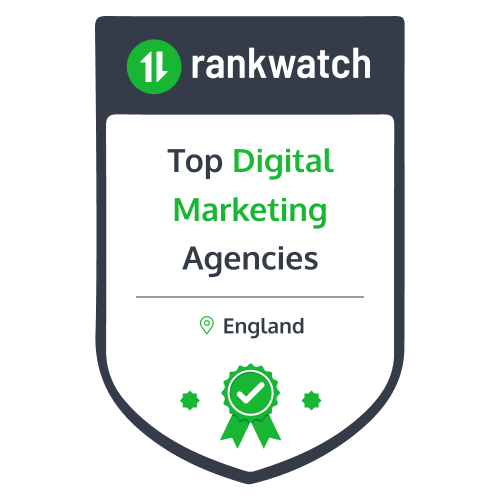
How to Create Compelling Content : A Guide
How to use "Petcha Kutcha" and Other Techniques to get the Very Best out of Your Subject Matter Experts
Content marketing is widely recognized as one of the most effective ways to improve the reputation and visibility of a professional services firm.
With a content-led strategy, you give your clients and prospects something that they will value, and find immediately useful.
But how can you create compelling content without bringing your top earners to a standstill?
And how can you make certain that the content you create is fit-for-purpose?
The trouble is that there is a lot of content out there and 90% of it is mediocre at best, produced for search engines, not real potential clients. Searching for seemingly useful titles like “What the legal services act means for you”, “What makes a great leader” or “How to create a measurable, repeatable pipeline of leads” results in a huge number of articles, the vast majority of which don’t tell the reader anything they don’t know already.

What Should You Do?
-
Can you create something that feels new? We call this the “man bites dog” angle on a subject. It’s the title that makes people stop and say “That’s different!”. You can sometimes craft this by bringing two themes or statistics together to highlight a gap – for example, “93% of CEOs think that [key industry theme] is critical for them in 2014 but only 3% believe they have the knowledge and skills to take the right action”. And if you can’t be truly new, then be brave and say something that goes against the flow.
-
Give away knowledge. Knowledge may be power – but giving away knowledge is even more powerful. It positions you as a leader in your field and portrays confidence and a sense of abundance. There are very few “trade secrets” in the professional services world: things that can’t possibly be divulged. The more you share, the more you stand to gain.
-
Create cut-through with authenticity: not only does content need to be relevant, current and immediately useful – but it must be real. Move away from gimmicks and storytelling, and speak with a genuine voice. Marketing Week’s trends for 2023 cites provenance as a key issue “People want to know more about the brands they consume, so the importance of authenticity and provenance will continue to play right across the spectrum,” says Charles Gibb, president of Belvedere Vodka. This is as powerful a differentiator in the b2b world as it is for consumer brands.
The Role of Content
The belief that content-led marketing is the way forward for professional-services marketing is received wisdom now. But most firms would hugely benefit from starting with WHY they want to create content. What does your firm need to achieve? What positioning does the content need to uphold?
“Differentiate between thought-leadership, which helps people to think in new ways, and can open up big long-term opportunities; and opinion-leadership (“how to…?” guides, “top tips” and infographics for example), which helps people to act, and is much more likely to result in business generated today”. Understand the difference in positioning that each creates in the marketplace. Opinion leadership may result in business now and in the immediate future, but it is more associated with expert tactical delivery than strategic, trusted advisor status.
Differentiating content in this way gives the firm freedom to choose the content – and modality of content – most relevant to your current needs and long-term strategic goals.
Using ‘Profitable Content Space’ to Minimise Fee Earner Distraction
Many people in the firm have an interest in the content you release. The risk is that unmanaged opinions at different stages in the process can burn fee earner time, reduce confidence in marketing, stall publishing or result in ‘vanilla’ content that lacks the cut through it was originally created for.
The answer? Have one key individual fee earner that “owns” the output, and create a clear position on your most profitable content space that every stakeholder buys in to.
Firms that do this effectively build an understanding of what cut through looks like from the very beginning. This is most often achieved by asking every stakeholder to give their support to the relevant fee earner in masterminding content that exemplifies a particular combination of factors that will set the agenda. This in turn builds a position of confidence in the agreed outcomes, and leads to an agreement that not everyone in the business can or should comment on detail later on in the process.
The profitable content space is the overlap between three elements:
-
Your core competence. Where does your firm consistently get “A” grades rather than Bs or Cs? It might be the service you offer, or it might be something different, like speed of response, or quality of training manuals.
-
The burning issue: Ask your clients and prospects – what is the biggest problem they need to solve right now, and the biggest challenge coming down the track? Help them articulate this in a fresh way – and use this to create a ‘man bites dog’ moment.
-
The differentiator: What you do or say or share that is fundamentally different from competitors. Be creative. For example, could you create content that is in a particularly easy to scan format and released within three hours of a news story breaking? Or could you be the firm that predicts the future more clearly than anyone else?
When you have done this, you can find your profitable content space. The overlap between these factors will provide you with a very short list of content and format ideas that will really stand out and are authentically yours.
And then check these out against the industry buzz.
What’s in the news?
What content is most commonly downloaded or shared? What are people searching for on Google? What are the most active discussions on LinkedIn? What does this research tell you about how to frame and position your content?
BH&P uses a customized tool to measure your share of voice compared to the competition - who is talking about what topics? in what way? What events and content are being shared, via what platforms? And most importantly, what are prospects engaging with? If you don't have access to these types of insight, contact us today to ask about BH&PBrew, and start growing your share of voice today.
Creating Compelling Content
To achieve this level and type of content is simply not possible without using the best brains in your firm. The challenge is in using their time effectively so that for the minimum amount of input, you get the best possible outcome.
You may have heard the term “PetchaKutcha”. The idea is that you get the best, most relevant person in the company to compress their thoughts on a key topic to just 12 slides that can each be delivered in 20 seconds (traditionally PetchaKutcha has 20 slides, but my personal experience leads me to believe that for marketing content, 12 is the optimum number). By asking them to do this you are getting the thinking up front, unlocking the story in a way that has clarity and purpose and forcing them to extract from their brain a story that holds weight when it’s delivered out loud.
The alternative – interviewing the fee earner and receiving a complete brain dump which marketing then distills into a piece of content – is less effective than asking the subject-matter expert to do their homework.
Why?
Because the fee earner has delegated the responsibility for inking in a credible story for the sake of short-term expedience. This will show up later in the content production through hours of fee-earner iterations and edits (or worse, content that won’t see the light of day).
Top tip: video or record the delivery of the “PetchaKutcha” style presentation so that you have available content in three formats – video, audio and transcript. This can be readily sliced and diced into many formats without extensive review cycles.
With great content as a starting point, this creates a platform for blossoming content creation.
Update for 2023: The Use of Generative AI
Generative AI such as Google's Bard or Chat GPT can be used effectively to speed up the process of creating original content. The trick is in the curation of the content, rather than in expecting a bot to write something compelling. To be clear - this is an efficiency tool, not a replacement for a skilled writer.
Here are our 7 key tips for using generative AI to support content creation for professional service firms:
TIP 1: Think carefully about your inputs: give the bot a clear task to do, and if it requires specific content, provide this. The word limits that you can upload are ever-increasing, and don't be afraid to upload content in several parts if it is too long
TIP 2: The art of conversation: if you give the bot feedback, it will improve its response, just as a person would - if you are creating a content piece, keep all the conversation within one chat, so the machine can learn from the dialogue
TIP 3: Upload a style reference - tell the bot what tone of voice you require, whether you want subheads, the length required, as well as a short exemplar piece of content that you have written previously
TIP 4: If what you are writing is to be used to support an SEO strategy, give the bot an SEO brief - it needs to know the keyword strategy, and what the content needs to be optimized for
TIP 5: Bots can quickly turn rough transcripts into first drafts of articles, or corrected transcripts - use any software (e.g. Word Dictate) to transcribe a subject-matter expert's thoughts or perhaps a Zoom call, then copy and paste this into a bot with instructions regarding the desired output
TIP 6: If you have a large amount of content or articles to read as inputs for a strategy, campaign, or content piece, simply copy the article into the bot, and ask it to pull out the salient points for you. You can also ask it to turn these into draft social posts to allow you to quickly review and comment on content
TIP 7: Bots are no substitute for the human brain - they are an efficiency guide. The sources they use may be several years out of date, or inaccurate - and the writing styles can often seem stilted compared to your exemplars. Always take the time to check and refine content personally - whether it is for publishing, for a tender, or for an internal training session.
A Final Thought
Creating content provides many opportunities within a growing firm – not just through the content itself, but also by the very process of its creation.
The method of researching, verifying and refining content provides opportunities to open up peer-to-peer conversations with people and prospects who might not otherwise take your call. Invite them to speak at your event, or simply meet up with them for lunch. By recognizing and incorporating their opinions, you build long-term relationships that go far beyond the content itself.
And of course, you can bask in the reflected glory of their name and brand.
Find out more about how Google crawls and renders content, and how to improve the visibility of your content in our latest article.
This article was first published in PM Forum and discussed at a panel of leaders in the legal profession. Updated for 2023.
BLOG
|4 MIN READ
BLOG
|5 MIN READ
BLOG
|4 MIN READ
BLOG
|5 MIN READ
BLOG
|4 MIN READ
BLOG
|2 MIN READ
Sign Up



